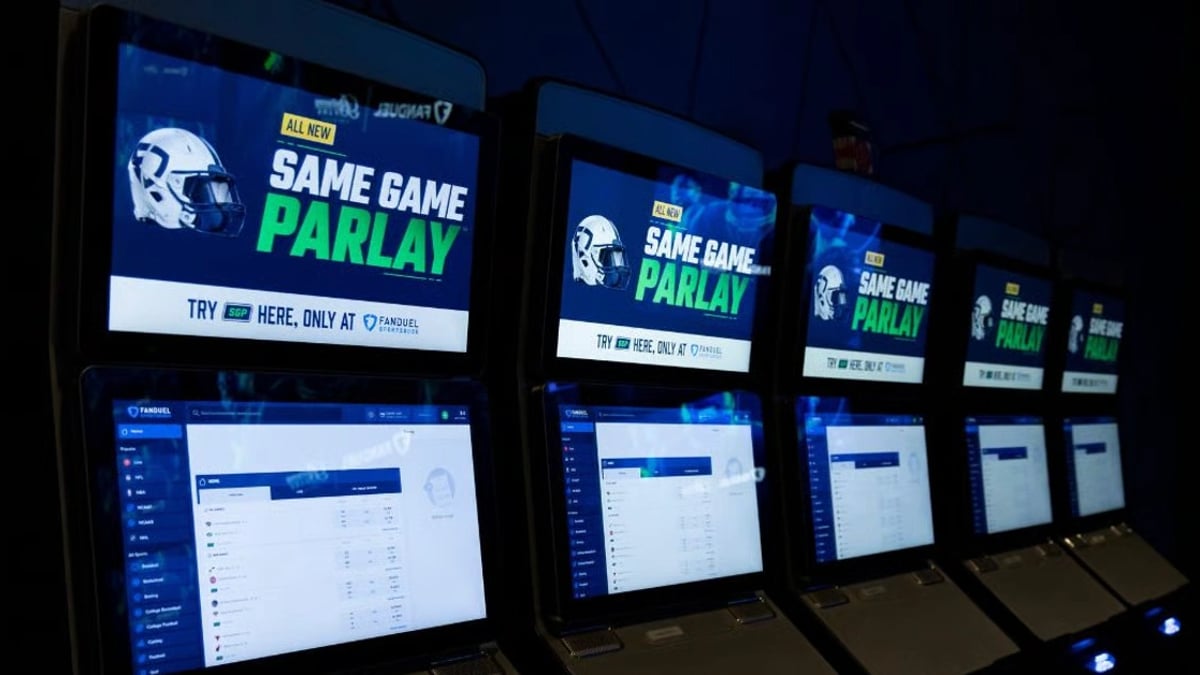Mastering Parlay Betting: A Comprehensive Strategy Guide

- #ad. 18+. Gamble Responsibly. Gambleaware.org. Must be 21+ and present in OH. Gambling Problem? Call 1-800-GAMBLER
This guide provides strategic advice for parlay bettors, including tips on selecting games, managing risk, and understanding different bet types. We explain alternative parlay formats such as same-game parlays, round robins, and teasers, and touch upon calculating potential payouts.
What is a Parlay Bet?
A parlay bet, an accumulator, or a combo bet combines several individual bets into a single wager. For your parlay to pay out, all of your predictions, or "legs," must prove correct. If even one bet loses, the entire parlay is lost.
However, if any bets result in a "push" or a tie, that specific leg is eliminated from your bet slip, and the parlay is recalculated based on the remaining games' odds.
You generally cannot bet on conflicting outcomes within a parlay, as all legs must win for the bet to cash out.
Parlays allow you to combine the potential payout totals from different outcomes to create a significantly larger payout than if you had placed each bet individually. You can include various bets within a parlay, such as moneylines, point spreads, totals, props, and specials.
Types of Bets to Include in a Parlay
- Moneylines: Simple wagers on which team will win outright are ideal for parlays because most sports rarely end in a tie, reducing the risk of a "push."
- Point Spreads: The standard odds and ability to adjust point spread lines can be helpful when calculating parlays.
- Totals (Over/Under): These wagers are simple to make and allow you to bet on an outcome independent of which team wins the game. For example, the “total goals” market limits the possible outcomes to two (over or under), potentially boosting your chances.
- Prop Bets: You can parlay many prop bets within a single game (e.g., a specific player to score and the team to win the first quarter). This can boost individual prop bets, which often have wager limitations.
- Draw No Bet (DNB): This soccer-specific market presents two options: Team A wins or Team B wins, removing the tie option. If the match ends in a tie, your bet is voided, and your original wager is returned. Adding this to a parlay mitigates risk, preventing one drawn game from tanking your chance to win.
- Both Teams to Score (BTTS): This market is often easier to predict than outright winners. It's especially effective when betting on matches between top-scoring teams. This type of bet can be a great addition to a parlay, allowing you to find value where you are unsure of the outright winner.
Will a Push Void an Entire Parlay?
A “push” occurs when the result of a game is precisely equal to the line set by the oddsmakers. However, a push result will not void your entire parlay.
If a game in your parlay results in a push, that specific game will be eliminated from your bet slip, and the parlay will be recalculated based on the remaining games' odds. This means you will win a smaller amount than initially expected.
Most sportsbooks try to avoid this outcome by setting lines at half-point increments.
How to Place a Parlay Bet
Creating a parlay is straightforward:
- Choose the outcomes or teams you believe will occur and add them to your bet slip.
- Once you've selected, combine them into a parlay and set your stake.
- All your chosen wagers are automatically merged into one large wager with a combined payout. (Most sportsbooks have a built-in parlay calculator that automatically shows your potential payout as you add selections.)
Winning a parlay becomes easier if you know the games or teams you are betting on. Strategically picking a mix of underdogs and favorites is generally more effective than simply adding many underdogs, which is less likely to pay off.
Why You Should ‘Buy Points’ on a Parlay
If you are betting on spreads or totals, you can buy points to swing the parlay bet more in your favor. Buying points allows you to adjust the line to make the bet more profitable or reduce the chance of a push. You can typically buy up to ten points.
It's handy when you anticipate a game might result in a push; buying points, even for a few cents per point, can be more beneficial than missing out on the parlay's payout due to a push.
Alternative Parlays
Same-Game Parlays
These parlays are composed entirely of wagers from within a single matchup. Many sportsbooks offer specific promotions, boosts, and bet refunds for them.
Round Robins
You create a parlay of three or more smaller parlays. This means you can still make a profit even if one or more legs don't go perfectly, as there's a slight margin of error with a reduced payout.
For example, a 5-way round robin on 10 different outcomes involves creating five parlays with varying combinations of those ten outcomes. You only need to pick half of the combinations to earn some winnings correctly. This type is risky and recommended only for more experienced players.
Teasers
This type of parlay exclusively covers point-spread picks. The key advantage is moving the point spread in your favor. You can move the spread up to give an underdog a better chance or move it down (known as a "pleaser") if you believe a favorite will win even with a larger handicap.
Simply Parlay Betting Strategies
There are some simple rules to follow if you want to make the most of your wagering at parlay betting sites:
- Stick to sports you know, particularly if you are new to parlays.
- Do your research and be confident in every selection rather than guessing.
- Find a level of risk you are comfortable with to guide your selection of favorites or underdogs.
- Start small with parlays of two or three picks before getting more ambitious.
Pros & Cons of Parlay Betting
- Higher expected value on a winning bet
- Rack up much bigger profits while risking a relatively small amount
- Can combine favorites from upcoming events to increase the odds for outcomes that would otherwise offer paltry returns on single bets
- Can take advantage of correlated outcomes that have a high probability of happening simultaneously
- Increase the number of games or outcomes you’re following at one time
- Lower probability of winning compared to single wagers
- Winnings can be delayed depending on what futures you include
- Injuries, roster changes, and standings can impact futures legs within a parlay
- Can be difficult to understand for novice bettors














